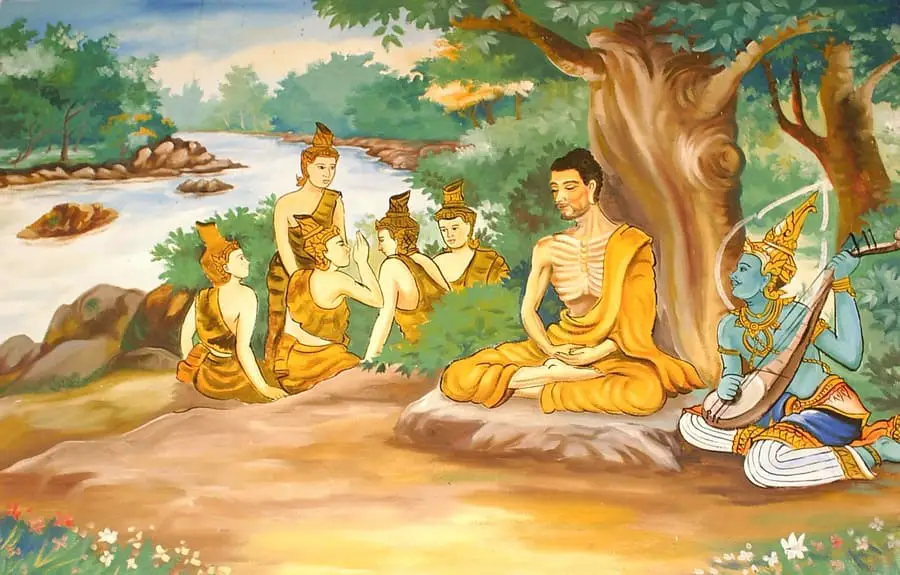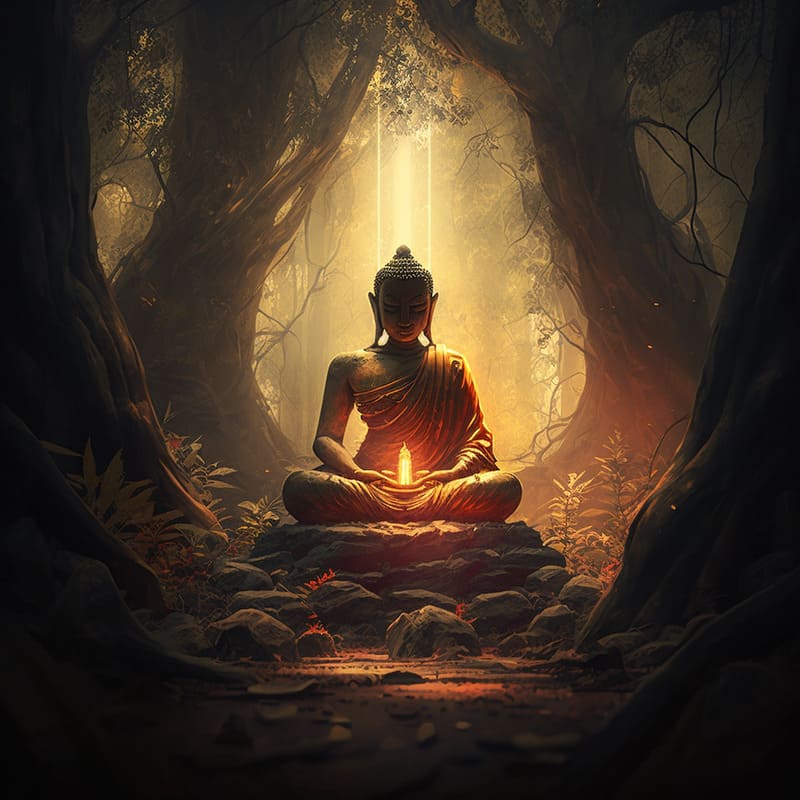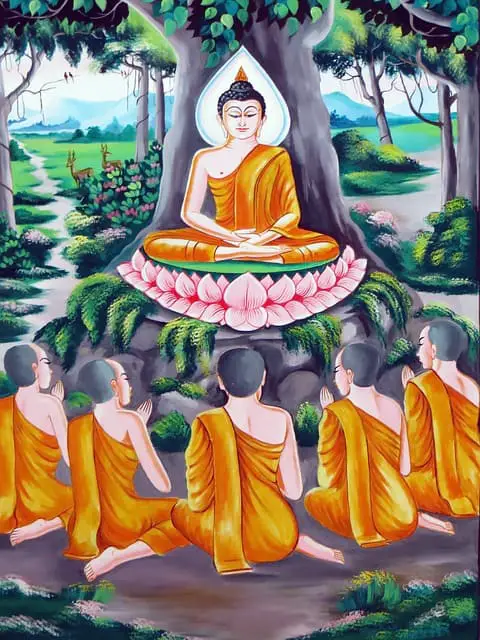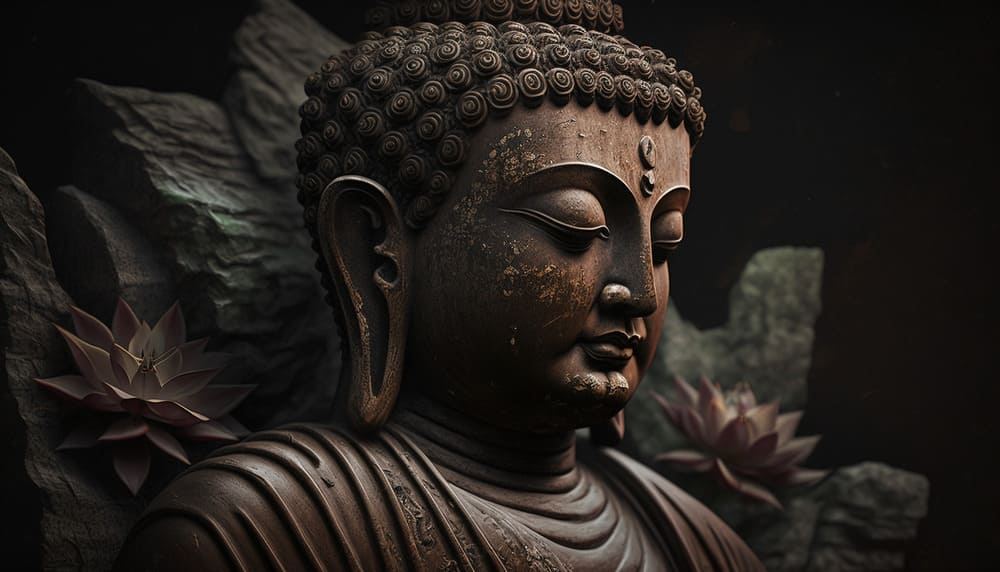Siddhartha Gautama, known as the Buddha, was born in a tiny kingdom below the foothills of the Himalayas around 567 BCE. His father, a Shakya king, was informed 12 years before his son’s birth that he would either become a world emperor or a renowned sage. The story of Buddha is an inspiration for all seeking a meaningful existence and an end to suffering.
After his birth, in Lumbini, Nepal, his father held him within the palace’s walls to protect him from the outside world and raise him in a princely luxury. When he came of age, he married Yashodhara, who gave birth to a son soon after. He had, as we would say today, everything.
Despite having everything money could buy, Siddhartha felt unfulfilled and deeply yearned for something more meaningful. He eventually left his comfortable life and embarked on a journey of self-discovery and spiritual enlightenment. After many years of meditation and studying under different teachers, Siddhartha achieved a state of supreme knowledge and wisdom and became known as the Buddha, or the “Enlightened One.” He began to teach others what he had learned and attracted a large following.
The Buddha’s teachings centered around the Four Noble Truths:
- The truth of suffering
- The cause of suffering
- The end of suffering
- The path to the end of suffering
He taught that suffering arises from craving and attachment but can be overcome through the Eightfold Path, a series of ethical and mental practices leading to liberation.
Despite facing opposition and criticism, the Buddha continued to spread his message of compassion and non-violence, attracting thousands of followers and establishing a large community of monks and laypeople. He spent the rest of his life traveling and teaching until he passed away at the age of 80.
Buddha’s teachings have profoundly impacted the world and continue to be practiced and studied by millions of people today. Here’s the life story of buddha to inspire you and if you want to learn more about his teachings you can also read Buddha’s story of patience.
Finding Liberation

Siddhartha Gautama sought liberation by leaving society and exploring teachings from different instructors. He first studied under Arada Kalama, who taught him to control his mind and enter a state of nothingness. However, after realizing this wasn’t the path to liberation, he left and began studying under Udraka Ramaputra.
Ramaputra taught him about how to reach the concentration of the mind; which is neither consciousness or unconsciousness. Yet again unsatisfied with the answers provided to him, Siddhartha parted his ways with the Ramaputra.
Determined to find the truth, Siddhartha and five of his companions engaged in a rigorous six-year training regimen of austerity and concentration. Despite the extreme physical and mental demands, Siddhartha persevered, living on just one grain of rice daily and pushing his body to its limits.
Related: 80 Quotes From Buddha
The Middle Path

After renouncing his prior ascetic ways and accepting sustenance, Siddhartha’s five companions left him. One day, while searching for food in a village, he was offered a meal of milk and honey by Sujata. Reinvigorated, Siddhartha made his way to the Bodhi tree and bathed in the Nairanjana River. He then seated himself on a mat with his legs crossed.
Having tried every teaching and method, he sat in meditation with nothing left to depend on or turn to. After six days, he opened his eyes to the morning light and realized that what he had been searching for was always within him and all beings. There was nothing left to achieve and no need for further struggle.
As he quoted, “Wonder of wonders, this same insight is the nature of all beings, and yet they are sad for lack of it.” At 35, Siddhartha Gautama, also known as Shakyamuni, the Sage of the Shakyas, became the Buddha, the Awakened One. He relished in his newfound serenity and freedom for seven weeks. He believed that most people would find it too challenging to understand. But the Buddha consented when Brahma, the ruler of the three thousand worlds, asked that he teach.
Death and Impermanence

As news of Buddha’s teachings spread, kings offered him parks and gardens for his retreats. Buddha continued his life as a wandering ascetic, relying on begging for food and spending his days in meditation. The only change was that he now taught almost daily after his meal at noon. However, these teachings were never documented during his life.
At the age of 80, Buddha passed away in Kushinagar, India. Although some of the monks present were saddened, Buddha comforted them by reminding them of the temporary nature of all things and instructing them to rely on themselves and the dharma. One final time, he requested questions – there were none. He then spoke his last words, “All things are prone to deterioration; strive diligently.”
As news of Buddha’s teachings spread, kings offered him parks and gardens for his retreats. Buddha continued his life as a wandering ascetic, relying on begging for food and spending his days in meditation. The only change was that he now taught almost daily after his meal at noon. However, these teachings were never documented during his life.
At the age of 80, Buddha passed away in Kushinagar, India. Although some of the monks present were saddened, Buddha comforted them by reminding them of the temporary nature of all things and instructing them to rely on themselves and the dharma. One final time, he requested questions – there were none. He then spoke his last words, “All things are prone to deterioration; strive diligently.”
After his passing, the First Council was held by 500 elders in a mountain cave near Rajagriha during the first rainy season. The Buddha’s attendant, Ananda, recounted all the sutras, Upali recited the Vinaya which included the 250 rules for monks, and Mahakashyapa recited the Abhidharma, a collection of Buddhist psychology and philosophy. These three volumes, known as the Tripitaka, were later inscribed on palm leaves and laid the foundation for all subsequent iterations of Buddhism.
FAQs: The Story of Buddha
Gautama Buddha was born in Lumbini, Nepal, to royal parents of the shakya clan. He left his home at the age of 29 to live as a wandering ascetic. He committed his life to begging, asceticism, and meditation, and attained enlightenment at the age of 35 in Bodh Gaya, India.
Buddha left his palace at the age of 29 to live a life of a wandering ascetic which is known as Mahabhinishkramana (the great renunciation or departure).
The lift story of the Buddha and his teaching is an important source of wisdom for buddhists. It also helps spread the importance of understanding one’s own belief and their ways of life.
